
This post may contain affiliate links. Read our disclosure policy.
This can be a surprisingly controversial debate and is a question I get asked about all the time. Which is better: butter or shortening? I’m going to be diving deep into the exact differences between the two, and even comparing the same recipes made with each so you can SEE the differences.
It seems so simple to just substitute out one ingredient with another but baking is truly a science and every change you make can result in a totally different product! I’ve done specific testing on butter vs. shortening with pie crust, biscuit, and cookies. In the video below I’ve explained everything in case you don’t feel like reading. Let me know in the comments below if you’re Team Butter or Team Shortening!
Butter

What is it?
Butter is composed of at least 80% fat (per U.S. standards) and no more than 16% water, plus a smaller amount of milk proteins. That water content turns into steam while baking and can increase gluten production, which can result in a crisper cookie, flakier pie crust or biscuit.
Butter has a melting point that’s around body temperature. This means it starts to melt the moment it encounters heat, giving it that melt-in-your-mouth feeling we all love. For cookies, this also results in more spread and a flatter cookie.
PROS
• All natural.
• Provides an excellent incomparable taste.
• Butter offers a melt-in-your mouth texture.
• Gives biscuits and pie crust an incredibly light yet flaky texture
CONS
• Butter can be expensive.
• It can melt too quickly and cause baked goods like cookies to spread too thin
• The temperature of your butter in baking is really important, so it’s a little more difficult to get right
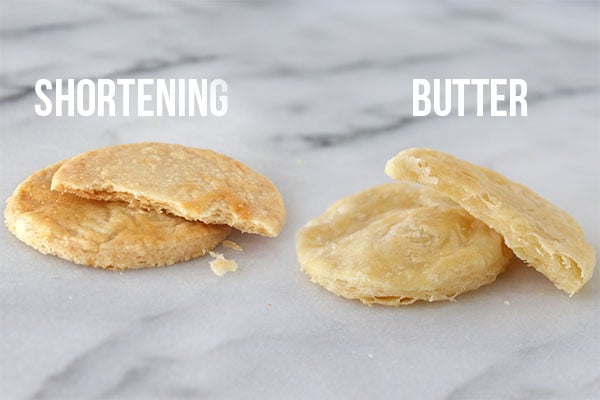
Shortening
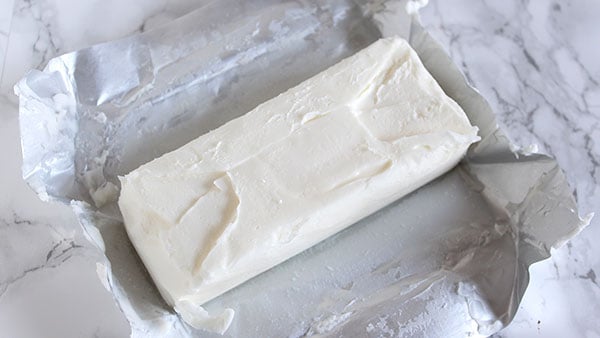
What is it?
A fat that is solid at room temperature and typically made from vegetable oils. It used to be commonly made through a process resulting in trans fat, but now that we know how trans fat negatively impacts our health it can now be manufactured in a way that results in saturated fat instead. Basically, it is a cheaper and more shelf stable butter substitution.
Shortening is 100% fat, containing no water. That means no steam is created during baking which effectively reduces gluten production, so shortening cookies tend to be softer and more tender. Also, shortening has a higher melting point than butter, resulting in taller cookies. Because there is no water, most brands of shortening will recommend you add in 2 tablespoons of water for every cup of butter that you’re substituting with shortening.
PROS
• Shortening is cheap and has a long shelf life.
• Cookies made with shortening are tall and tender.
• It can be easier to work with than butter which can quickly get too warm.
CONS
• Not natural.
• Can’t compare to the flavor of butter, even if the shortening is “butter-flavored” (nothing is as good as the real thing).
• Lack of water leads to a more crumbly texture.
Shortening’s higher melting point results in a taller cookie. However, it also means that it doesn’t fully melt in the mouth like butter does, leaving behind an unpleasant waxy coating on the palate.

THE VERDICT?
I personally prefer butter over shortening and rarely bake with shortening. I just like to use natural ingredients when possible.
That waxy coating I just described is exactly why I don’t like to use shortening in recipes like buttercreams or icings where that waxy feeling is super obvious. Sure, buttercream made with shortening won’t melt if you’re serving cake or cupcakes in a warm area, and it’ll remain stable for longer, but that’s not enough to sacrifice the better texture and flavor butter offers.
However, I do like the height and tenderness shortening lends in cookies. That’s why I would suggest using 50% butter and 50% shortening – or some similar combination – to get the best of both worlds if you’re baking cookies. However, when it comes to pie crust and biscuits, I prefer 100% butter.
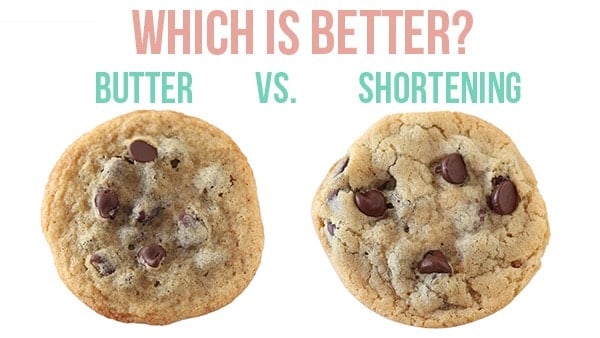
Shortening can be a great option for people who can’t eat dairy or who subscribe to a vegan diet.
I hope you found this insightful! Which do you think is better? Leave me a comment and let me know what you think.
About Tessa...
I share trusted baking recipes your friends will LOVE alongside insights into the science of sweets. I'm a professionally trained chef, cookbook author, and cookie queen. I love to write about all things sweet, carb-y, and homemade. I live in Phoenix, Arizona (hence the blog name!)
Leave a Comment & Rating
Add a Review or Question
© Handle the Heat - handletheheat.com
Join the Handle the Heat Community
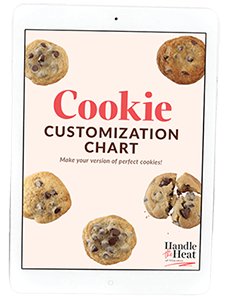
Instead of digging through cookbooks and magazines and searching the internet for amazing recipes, subscribe to Handle the Heat to receive new recipe posts delivered straight to your email inbox. You’ll get all the latest recipes, videos, kitchen tips and tricks AND my *free* Cookie Customization Guide (because I am the Cookie Queen)!

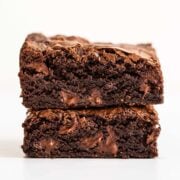



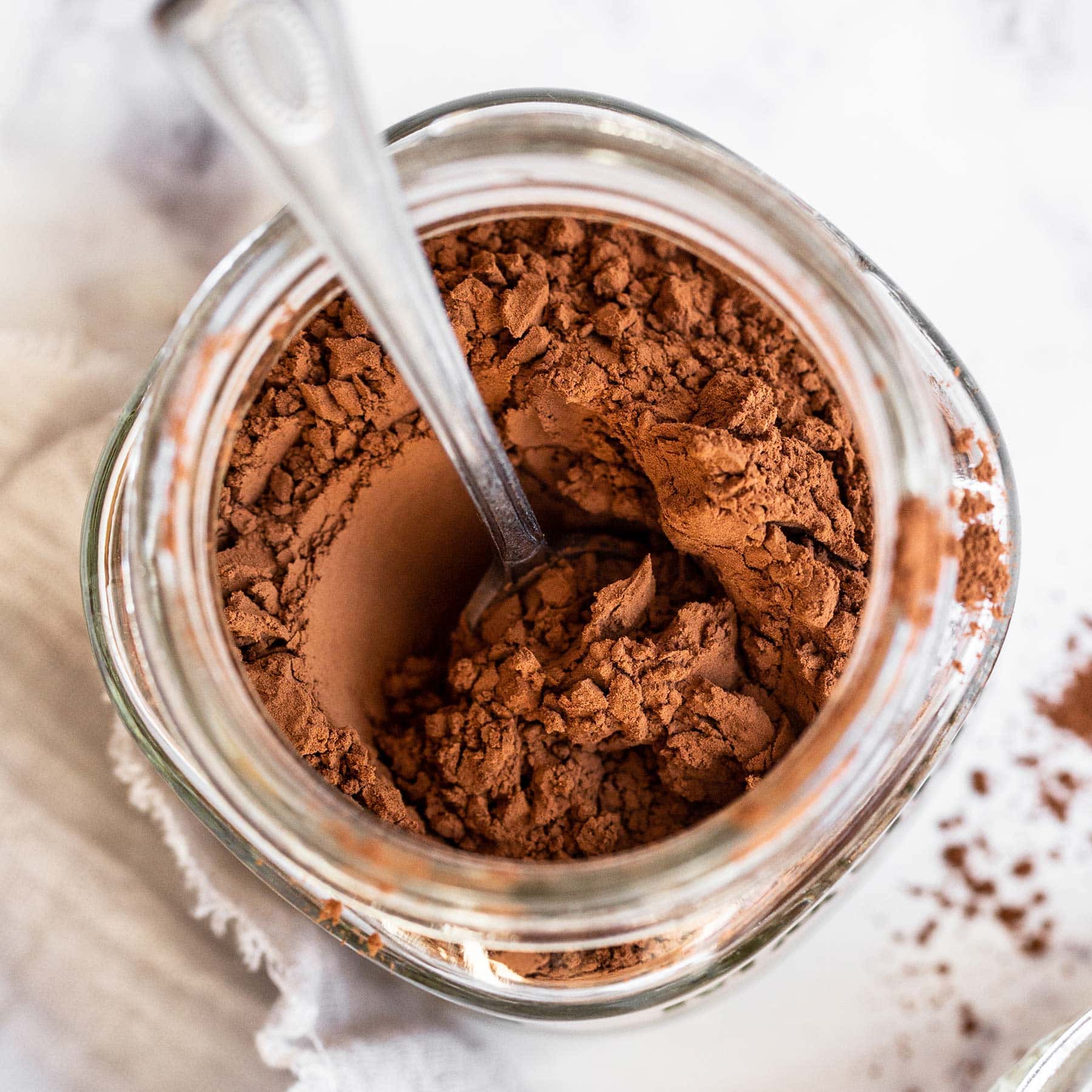
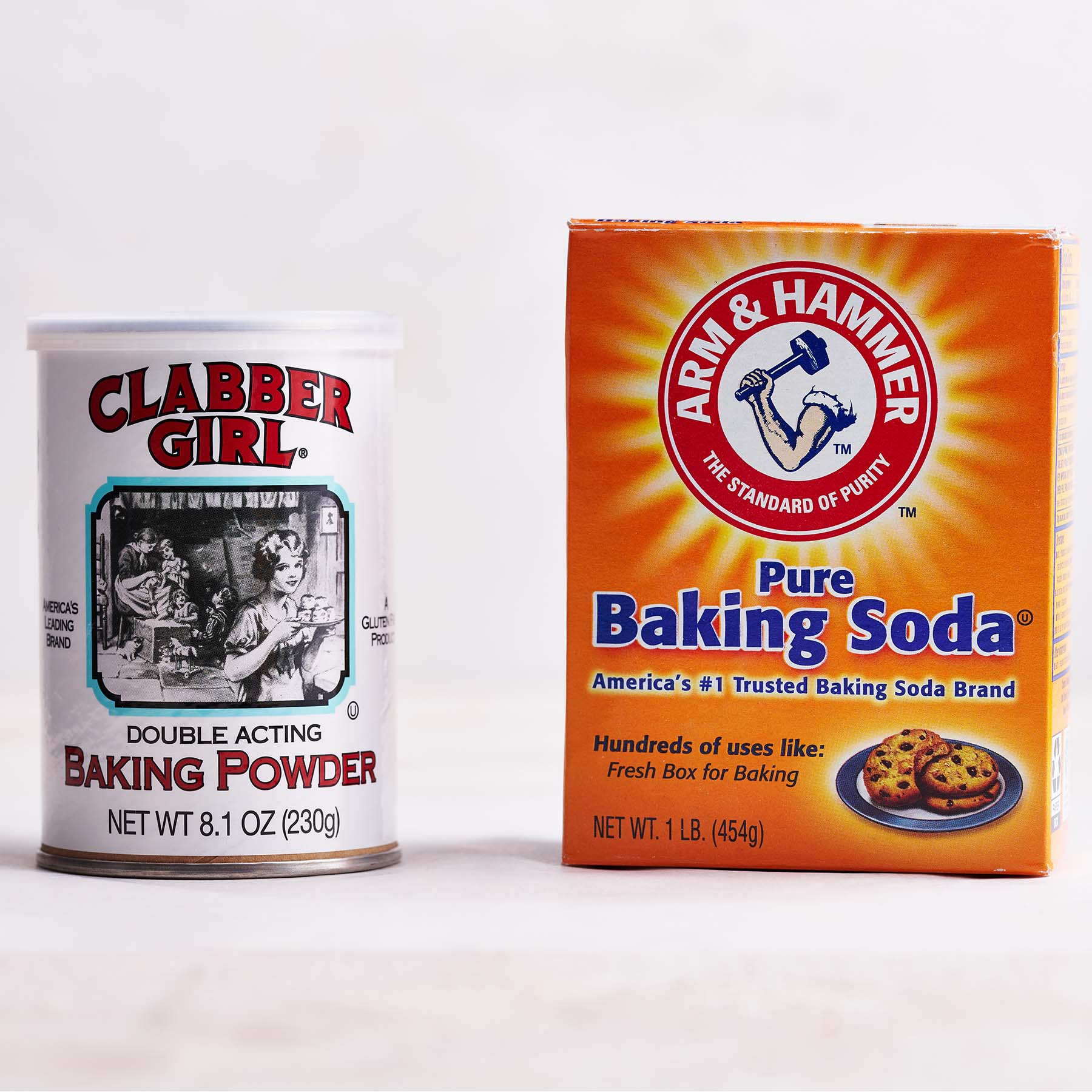



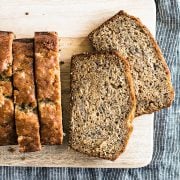
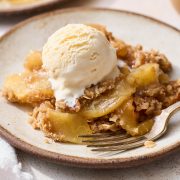
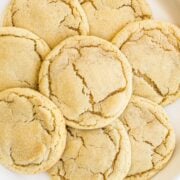
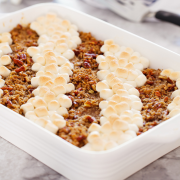

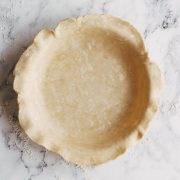
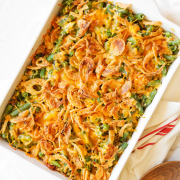
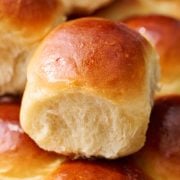
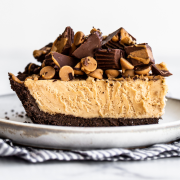

What difference in the butter vs. shortening debate might using clarified butter make?
Hi there! Clarified butter has a composition of almost 100% pure butterfat – it’s butter, but with the milk solids and water removed. This makes it great for searing, frying, or roasting food as it raises its smoke point; however, Tessa doesn’t bake with clarified butter. Because the milk solids have been removed, you run the risk of drier baked goods. It may be possible to use clarified butter in recipes where creaming the butter isn’t necessary, but we haven’t tested this enough ourselves to say for sure. We always recommend baking with butter for best results.
50/50 – I’ve been doing that! Thank you for the explanation!!
I think it best to use whichever the recipe was developed to use!
I buy shortening for two uses. The first is to make the Gingersnap cookies from the recipe passed down from my fraternal grandmother. It’s been in our family for 100+ years. The recipe was developed to use shortening and the result is a soft cookie with a bit of a chew and a LOT of ginger flavor (1 Tbls. per batch of 3 dozen cookies). I have NEVER had that “waxy” feeling you speak of on my tongue!
I also use shortening to make a batch of “Baker’s Goop” which is the ONLY thing I use to prep pans and it’s worked 100% of the time even on my baking pans with intricate designs.
You just whip together 1 part shortening, 1 part vegetable oil, and 1 part AP flour (all by volume). When it’s all whipped up, scoop it in a jar and refrigerate until needed. It lasts a very long time.
Hi my name is Rich I did enjoy you comparing the two butter and margarine I have a recipe from 1956 heavy cream custard tarts or Pasteis De Nata Portuguese recipe
my father used to always use a high ratio puff paste shortening called Flakemore for the dough and I’m thinking because the cost is lower th n butter
the custard part was made all from natural ingredients Heavy cream egg yolks sugar cake flour no preservetives
My question to you if I start to substitute the butter for the Shortning and being that butter has a lower melting point and the shortening and the cooking temperature is approximating 500° will this be a good option to cook my Pasteis ?
Hi Richard, we haven’t made those recipes before, so I’m unable to offer recommendations. Good luck!
Butter camp here.
What a great video you made about butter versus shortening! This is something that I have never fully examined or thought about but yesterday I made a batch of oatmeal cookies that came out flat and when they cooled they were hard. I am not a big fan of shortening because I am of the older generation and remember when it was such an unhealthy product so your comment about the way it is made now versus then what is a surprise to me and now it has been added to my grocery list. Thank you again I really enjoyed it
Tessa-
In pies and turn overs, would you prefer using only butter, only shortening or both…if both…what would be your quantities?
Loved your explanation, I recall using Crisco when making toll house chocolate chip cookies when I was a teen, and the cookies were fluffy I’m not happy with the toll house recipe these days using butter, they are to flat looking
And I recall using granulated brown sugar I poured to measure, which I found and will use in place of the packed brown sugar Your info about trans fats also helped me decide to buy shortening again
Thanks again ( regards from Boston )
Thank you, this is insightful! I also prefer natural ingredients but found a cookie recipe I would like to make that calls for shortening. I was hoping I could substitute butter, but now I am wondering if perhaps oil or ghee is a better substitute (since shortening is solidified oil)? Or maybe half butter and half oil/ghee? Just curious if you have any thoughts. Thanks!
Would you use a 50/50 butter/shortening mix for cake icing too? I am making a tiered chocolate cake for an outdoor, evening birthday party and I am concerned about “melting” icing. The party will be under a tent too.
She explained how shortening can leave a film in your mouth when used in frosting, I avoid certain cakes at those big box stores because I’ve noticed the frosting leaves an after taste, Probably that film from the shortening she mentioned, personally Butter would be better Of course it may soften in the heat
Love better much better than shortening, especially in cookies. Was glad to see you feel the same.
thank you so much for scientific explanation..baking is really a sience..yesterdsy I made to batches of cookies one with butter ans shortening and the other with shortening a d I noticed the difference . when I read the blog I found answers for -all-my- qustions scientifically..
I remembered that hard cupcake which I made with shortening and that ygly taste of buttercream which contained shortenin g ..from JORDAN thank you so much..
Thanks for the great information! I recently tried a friend’s Ginger Snaps cookie recipe which called for one and a half cups of shortening. Well, I only had a cup of shortening, so I used 1/2 cup of butter to make up the difference. I had no idea how they would turn out, but I was very presently surprised to discover that the cookies baked perfectly and we’re delicious! I did not overbake them, so they ended up being slightly crispy on the outside and chewy on the inside. They were absolutely perfect to me–better than the ones she had made using shortening only. That may just be my own preference talking, but I will definitely do the same thing the next time I make them. A few days later, after being stored in a Christmas cookie tin, they are still crispy and chewy. I’m not sure how much the butter influenced the texture of the cookies, if at all, but they sure are good! (There is no be waxy aftertaste, probably because the cookies are spicy.) Anyway, thanks again for the great article.
I am a 10 years scratch baker. Excellent video
Thank you for the explanation and photos. I will take your advice and try butter in my pie crust.
when making butter cream frosting on my cupcakes for an outdoor event can i freeze the night before to keep from melting?
Thank you
This site is awsome. You not only say how much to use but you say the what and why in order to get the best taste possible. My wife and I have a pastry-giftshop we just had our grand opening and we are always looking for ideas. This site has helped the creativity seem very forceable.
Making an Easter wheat pie that calls for 3/4 c butter and 1/4 c shortening, both cold and cut in small cubes. Will have to pulse processor to create dough which includes a few tbsp ice water. Would prefer to use all butter but concerned about changing recipe. Don’t want too thick a crust even though recipe is a pastiera napolitano made with ricotta filling. Suggestions, comments, recommendations? First time trying this recipe.
Butter-butter-butter all the way. By the way I love your
recipes.
I am trying to make a stable frosting used in whoopie pies and or gob cakes. everything calls for shortening and i have never used it. although it seems like shortening is definitely healthier today, the thought of using a product that isn’t natural kinda freaks me out. but the thought of having whoopie pies without that great filling also freaks me out. do you have a reasonable recipe that is similar to the traditional (half shortening and half butter) recipe? I am not interested in using fluff either.
Thank you,very helpful article. Yesterday I’ve made cookies, which ment to be firm and crispy . The recipe had shortening. I didnt have it, so I used butter instead. They came out very soft , melting before even reach mouth… Next time I will follow recipes. 😉
I love your information. I always use butter sometimes margarine to cut some of the cholesterol. Never use shortening that is just to greasy and tasteless. Love the info on refrigerating the chocolate chip cookie dough.
HI Tessa,
I just love all the information that you give in your videos. I have learned so much!
I am all about the butter! I keep butter shortening on hand, but rarely use it. Thank you for your informational video!
I much prefer butter in frosting but is there any way to get that nice white color with butter frosting?
Unfortunately not really, especially if you’re using vanilla.
Thank you for the great video explanations in butter v. shortening and baking powder and baking soda. It was very helpful. I have tried many of your recipes and been really happy with them.
Recently a friend gave me a recipe for Armenian sugar cookies that used clarified butter, sugar, and flour. While her cookies were delicious and melted in your mouth, I could NOT get the cookies to hold their shape when baked. They went flat and the sugar did not incorporate and dissolve: My friend used ghee which she refrigerated first. I did the same and after three failed attempts, gave me up. The recipe said to beat 1-1/2 cups clarified butter till almost white; add a cup of sugar and beat again. Then add spoonfuls of flour (2 cups) and kneed 3-4 minutes to dissolve the sugar. Roll by handfuls into “ropes” of dough about the size of a nickel and bake at 325 degrees for 15 minutes. It also said you could chill the dough for 5-10 minutes for easier handling, which I also tried.
I’m an experienced baker and this has me stumped! Any suggestions or ideas as to where I went astray would be much appreciated!
Thank you!
Hmm that’s a strange recipe! I would try chilling the dough for even longer, and try chilling the shaped pieces before baking to help them keep their shape better. I’ve never tried a recipe like that so sadly I can’t offer much advice 🙁
Team Butter all the way! My Gran is the one who encouraged me & taught me the art of baking. She always said use the best ingredients you can get as they translate into the best tasting confections you can give.
Love that! Smart lady 🙂
I much prefer BUTTER. I haven’t used shortening in years, and am not sad to admit it.
Thanks for your comparisons—it made my day!!! Thanks for all your tips and recipes.
Love them!!!
A devotee of all natural butter. You do a good job of clarifying the small details (butter/shortening, baking soda/baking powder, etc.) that are can really change the outcome of a recipe. Your cookie e-book is great. Thank you for providing this information.
Thank you so much, Belinda! I so appreciate your kind words 🙂
I’ve been baking for many, many, many years and I just learned so much from this video. Thanks for all the info you share a well as the wonderful recipes.
So happy to hear that, Myrna! Thanks for watching!
I was sooooo disappointed I could not get sound to hear what you said……
I went to Utube and had sound, I turned off for a while …didn’t help.
I love to information you give… A grandmother 67, I enjoying baking…
Hopefully later I can hear what you have to say.
Thanks for all the great tips
Tessa: GREAT video and excellent information! I definitely lean heavily to the butter, butter, butter side, except with my pie crust recipe, which is 50/50 and makes THE most gorgeous, flaky, delicious crust in the history of EVER. Thank you for sharing such great tips with us. I would not miss one of your posts or videos! Hugs, girl!!!
Thanks so much for your support, Vickie! I’ll have to try the 50/50 pie crust soon 🙂
Thank you Tess. I always thought butter was better and still do, but the shortening cookies look better.
Your Ultimate Chocolate Chip Cookie Guide was probably the post that brought me to your blog in the first place!
Generally I prefer butter for all my baking need. The flavor and browning qualities once it is baked is incomparable to the goods made with shortening. You are correct, sometimes shortening is necessary. I have made cookies in the past for someone who couldn’t eat dairy and used coconut oil because I didn’t have shortening on hand. It made a soft, fluffy cake-like cookie–not my preferred texture but not bad in the taste department.
Thank u for the great video and useful information!!! If I’m doing the 50/50 butter shortning for a cookie recipe will I need to add extra water or egg to compensate in a recipe that originally called for all butter?
I don’t think you’d need to!
Thoughts on other fats, like lard?
I’ve only ever made tortillas with lard. I’ll have to experiment some more! What do you think?
I love all your videos and baking tips, Tessa! Would you consider comparing butter and coconut oil? I have only tried it in a few baked goods and find it to spread like butter, but be flat like shortening.. Have you used it much?
YAY Butter…nothing compares when it comes to flavor and the fact that it’s natural! Anything with a shelf life of “forever” and probably can survive a nuclear holocaust without consequences I, personally, don’t want to put in my food no matter what it can do over butter ~ LOL! I’ll “put up with” the LITTLE differences and ALWAYS go with butter! So glad you did too, Tessa! You’re my baking hero so I would have been disappointed if you hadn’t!!!
Haha!! Thanks Pamela 🙂
BUTTER, BUTTER, BUTTER! I’m trying to get away from artificial foods in my diet, as convenient or cost effective as they might be. Besides, flavor trumps appearance any day and the effect on appearance is usually very minimal.
As you pointed out, the choice is based on what effect you are trying achieve. In most pastries where the flavor and lightness are expected I use unsalted butter. In some breads where shortening is used I will go with either oil or shortening. With cookies and pie crusts I tend to use a 50-50 mix because I want the butter flavor and lightening as well as the thicker structure provided by shortening.
Thanks for your efforts in educating us. I find your articles quite useful.
Team butter!! I prefer a natural ingredient. I was surprised when I took a Wilton cake decorating course that their buttercream recipe calls for shortening! I will have to try the half shortening – half butter idea for cookies 🙂
We always used shortening for buttercream in culinary school because it holds its shape so well, I just didn’t enjoy the flavor of 100% shortening buttercream at all. It is BUTTERcream after all right?! 😉
I also love to use Ghee instead of shortening. My pie crust asks for shortening and butter, I use Ghee and butter and whow, the crust turns out super tasty and doesn’t burn easily.
That’s so interesting, Caroline! I’ll have to give that a try.
This was interesting. I haven’t used shortening in a recipe for close to 25 years now. Firmly on team butter. Can’t stand the taste or feel of it in my mouth. (Shudders) One day, some 5 or 6 years ago, a lovely young lady came to work with a large covered tray. She was excited to share with us her grandmother’s frosted cupcake recipe. She had made them the night before, completely from scratch including the frosting. She knew that I baked and wanted to get my opinion on them. So she stood there, anxiously scanning my face as I bit into one. All I can say is that I deserve an Academy Award or at least a medal of some sort! The frosting was nothing but shortening with powdered sugar and flavoring. The batter had shortening in it as well. Blah! Ick! Yuck-a-doo! I needed a tounge scraper, toothpaste, toothbrush, mouthwash! It was awful! BUT, I smiled, told her they were lovely and wasn’t it wonderful to have these old family recipes. Then I thanked her, excused myself, went to the ladies room and was sick. Lol! So, yes, firmly team butter!
Haha!! I know just how you feel. Once in culinary school I had to scoop shortening from a GIANT container of it and ended with with greasy shortening all over my hand for the entire night. It just wouldn’t come off completely! So gross!
I’m all about the BUTTER now! LOVE this informational and educational video! Thank you Tessa!!!! I totally love your blog!
Thanks so much Genny!
As with all of your videos, this was very informative and helpful! Thank you so much.
Happy to hear that, Sally!
Doesn’t butter make cookies hard and crumbly? I want my cookies soft. I didn’t go to culinary school, so I dont know. Thanks for your advice.
I’m an unsalted butter baker for the most part with occasionally using half butter- half shortening in some cookies. Your videos are very informative. Thanks!
Thanks, Diane!
Tessa-
an interesting post as usual. However, under the cons for shortening, people should remember that a product may be labeled as having no trans fat, but may still legally contain up to 0.5g of trans fat per serving. And if you are like me and can’t stop with one cookie, etc., that “per serving” qualifier gets kind of meaningless.
Patty
Really good point here, Patty!
I am glad you chose butter. I haven’t used shortening in years. Love your blog!
Thanks so much!
I found your blog by google-ing “recipe for german chocolate cookies”. I’ve seen lots of recipes, but yours totally look the BEST and I’m hoping to make them soon. I also added your blog to my favorites to follow it. THANKS!